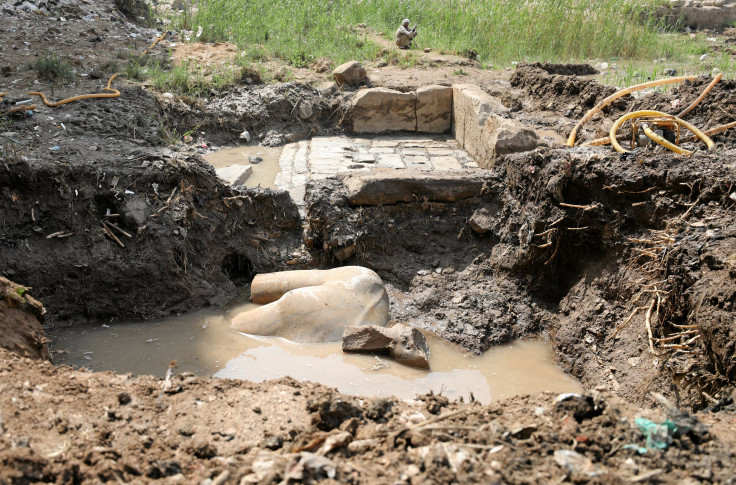Ancient Artifacts Found 2017: Pharaonic Statues Excavated In Egypt

Egyptian and German archaeologists found two massive pharaonic statues in a muddy pit in the Matareya district of Cairo Thursday. One of them most likely depicts the Egyptian ruler Pharaoh Ramses II, who ruled Egypt over 3,000 years ago, while the other one is a limestone statue of the 12th century B.C. ruler Seti II.
The statues were discovered near the entrance of the temple of Ramses II, which is situated in Heliopolis, an ancient city in the eastern part of modern-day Cairo.
The discovery, made by the country's antiquities ministry, has been hailed as extremely important.
"Last Tuesday they called me to announce the big discovery of a colossus of a king, most probably Ramses II, made out of quartzite," Antiquities Minister Khaled al-Anani told Reuters on Thursday at the site where the statues were unveiled. The archeologists said that the statue likely to be of the Ramses II measures eight meters (26.24 feet) and the other one, whose upper part was found, is said to be 80 centimeters (31.5 inches) long.
"We found the bust of the statue and the lower part of the head and now we removed the head and we found the crown and the right ear and a fragment of the right eye," Anani said, while speaking about the Ramses II statue.
The archeologists said they will now try to unearth the remaining portions of the statues before they finally restore them. If they are successful, and if the statue is identified as Ramses II's, it will be placed at the entrance of the Grand Egyptian Museum, which is expected to open in 2018.

"The discovery of the two statues shows the importance of the city of Heliopolis, which was dedicated to the worship of Ra, the sun god," Aymen Ashmawy, head of the Egyptian excavation team, said. He said the discovery was "very important" because it indicated the Oun Sun temple was a "magnificent structure," the Art Daily reported.
Dietrich Raue, who headed the German team, also said that the excavation was important and added that parts of the statues were being taken to some other place for restoration.
"The sun god created the world in Heliopolis, in Matariya. That's what I always tell the people here when they say is there anything important. According to the pharaonic belief, the world was created in Matariya," Raue said. "That means everything had to be built here. Statues, temples, obelisks, everything. But ... the king never lived in Matariya, because it was the sun god living here."
The discovery comes close on the heels of the excavation of remains of a 600 B.C. palace in Mosul, Iraq. The remains, found under the ruins of a shrine destroyed by ISIS, are believed to date back to the Assyrian empire, according to the Telegraph.
"I can only imagine how much Daesh (ISIS) discovered down there before we got here," archeologist Layla Salih told the Telegraph. She has been supervising the team that is identifying the unearthed pieces one after the other.
"We believe they took many of the artifacts, such as pottery and smaller pieces, away to sell. But what they left will be studied and will add a lot to our knowledge of the period," she added.
© Copyright IBTimes 2025. All rights reserved.






















